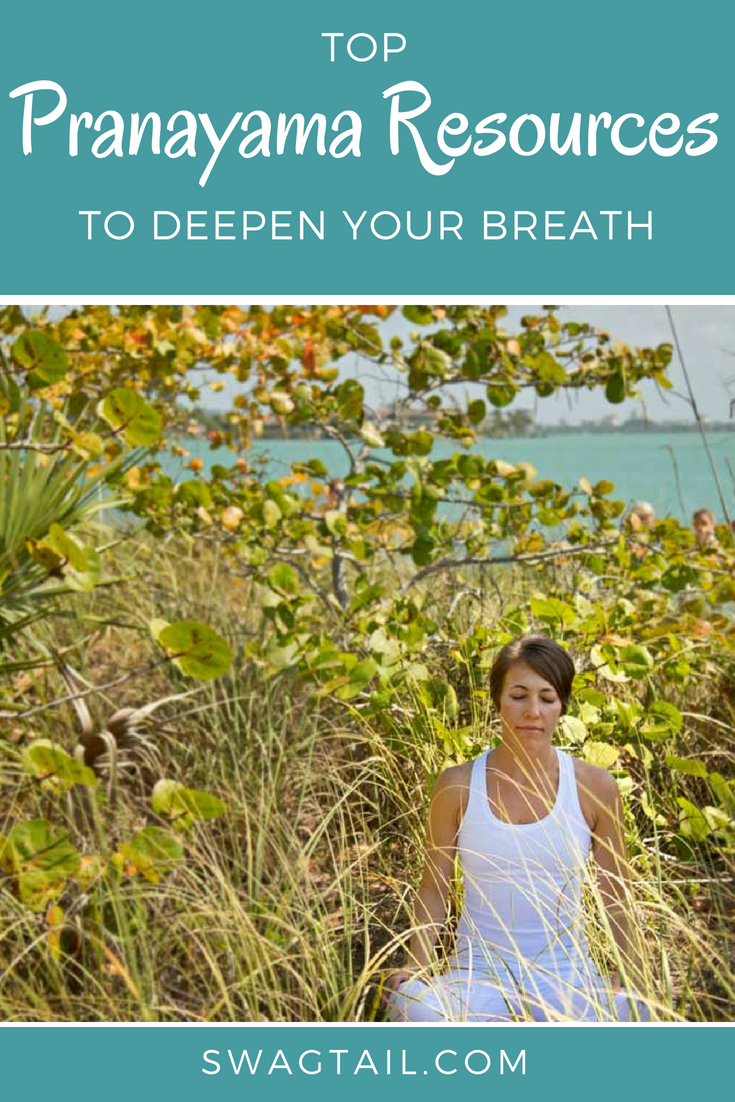 Many yoga practitioners and teachers today spend many hours focusing on the perfection of physical asana. While building a strong and flexible body is essential to well-being, the breath is really what supports and guides such a practice. The pranayama resources we share below allow you to discover ways to use the breath more powerfully. And, in doing so, energetically awaken your body, mind, and spirit.
Many yoga practitioners and teachers today spend many hours focusing on the perfection of physical asana. While building a strong and flexible body is essential to well-being, the breath is really what supports and guides such a practice. The pranayama resources we share below allow you to discover ways to use the breath more powerfully. And, in doing so, energetically awaken your body, mind, and spirit.
I just returned from a 21-day intensive yoga program here in Northern California. The days were split mostly between lecture, asana practice, and hands-on-teaching tools. A smattering of chanting and meditation were thrown in the mix. And, by far, my favorite moments were those we spent in exploring pranayama.
This is an area in which my own personal practice has been delinquent. While I set aside time each morning to meditation, and many afternoons to hit my mat for sun salutations and other asanas, I have by-and-large neglected my breathing. Yes, I use ujjayi pranayama in my physical practice. And, I occasionally use alternate nostril breathing, or nadi shodhana, to calm my mind before bed. Heck, I even throw in some split part breathing when working with private clients.
Yet, this time spent in training reminded me to set aside time to breathe on purpose. It invited me to refine my skills at lengthening the breath, and even restraining it to increase more pranic energy. Inspired to incorporate this back into my daily routine, I’ve picked some amazing books off of my shelf to refresh my knowledge of this practice.
In my dedication to constant improvement and ongoing learning, I’m going to reinstate a home pranayama practice. I’m also pulling these great yoga resources off of my shelf to share them with you now. Each book shares unique insights about how pranayama was developed and why it is effective. They also highlight valuable ways you can incorporate conscious breathing into your yoga practice.
WHAT IS PRANAYAMA?
Pranayama, most commonly referred to as the practice of conscious breathing techniques, is one of the most important parts of Hatha yoga. Pranayama can be further understood by breaking down the roots of this Sanskrit phrase; “prana” and “yama.”
According to Swami Sivananda, prana is the sum of all energy in the universe. Prana is also considered the life force or vital energy that is present in everything–including you, and me, and all of the stars in the galaxies. “Yama” translates to container, or a way in which to control or master something. When looking at pranayama from this perspective, it’s the science of consciously controlling pranic energies in the body.
You can also split up pranayama in another way: “pran” and “ayama.” The first portion of the translation still refers to prana, or life force energy. Yet, “ayama” means breath liberation. It’s the way in which you expand the flow of energy in the body.
Regardless of translation, there are several breathing techniques used in the practice of Hatha yoga, all of which aim to enhance the functions of the body and mind. And, they are all under the umbrella of pranayama.
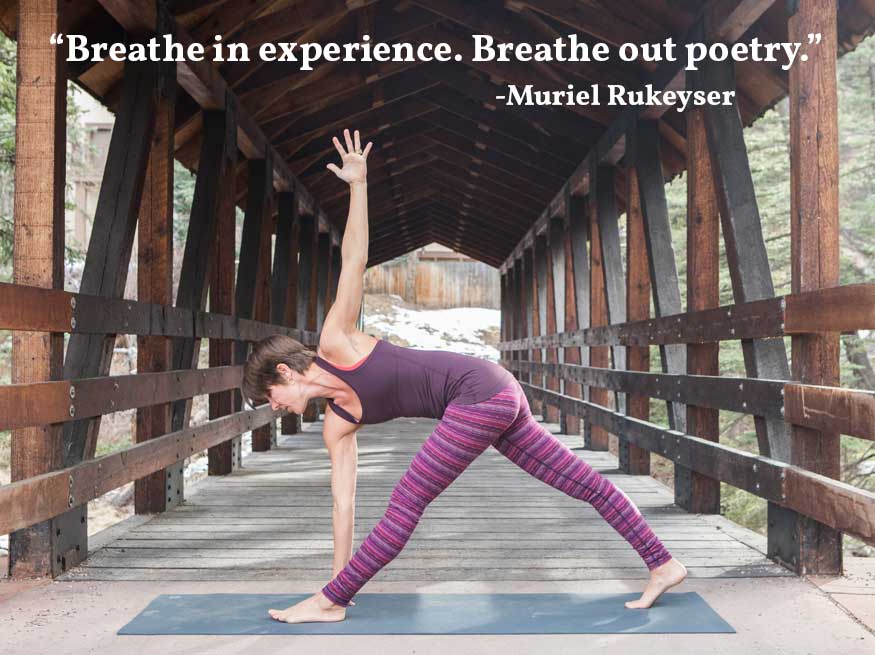
Photo Credit: White Starfish Photography
WHY MASTER THE BREATH?
The average individual takes about 17,000 breathes per day, amounting to about 500 million breathes in a lifetime (See Chopra, 2004 below). Pranayama takes that mere process of breathing beyond mere automatic function and invites conscious awareness into the process.
Pranayama was first developed by ancient yogis through close observation of the breath moving in and out of their bodies. They began to use pranayama to as a tool to regulate and direct the breath for specific purposes. And, they discovered that these techniques could cultivate prana–or life force energy–in the body which resulted in a whole host of mental, physical and emotional benefits.
With this deeper level of awareness pranayama can have the following benefits:
- Deepen an asana practice
- Improve self-awareness
- Cultivate wholeness in body, mind, and spirit
- Amplify energy levels
- Focus the mind
- Allow deep relaxation
- Reduce feelings of anxiety or fear (also tied with shallow, rapid breathing)
- Increase feelings of joy and appreciation (linked with smooth, easy breaths)
- Enhance control over emotional states, and
- Expand overall physical health
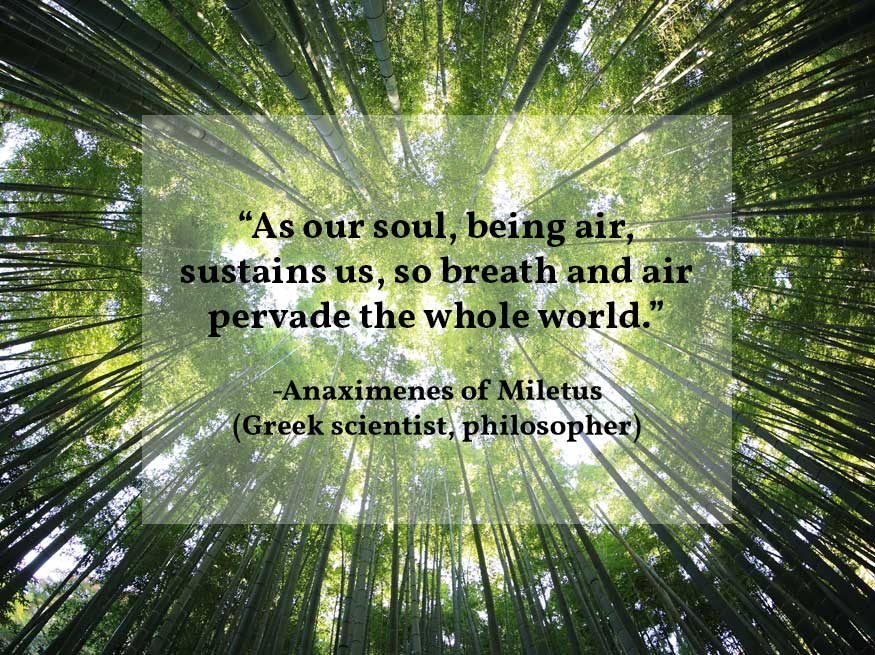
Photo Credit: Kazuend
RECOMMENDED RESOURCES
Instead of taking an in-depth look at the history of pranayama and the modern science of respiration here, I’d like to recommend the following pranayama resources below.
Light on Pranayama
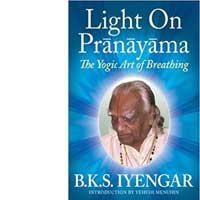 Author: B.K.S. Iyengar
Author: B.K.S. Iyengar
As perhaps one of the most influential icons in the yoga world today, BKS Iyengar dives into the art of yogic breathing here. He explains that “pranayama is a bridge which helps the student of yoga to cross from the realm of purely physical development to that of the spirit.” Iyengar explains that this is an essential step to self-realization, and he shares practical and insightful ways to use the breath to fulfill your potential.
Asana Pranayama Mudra Bandha
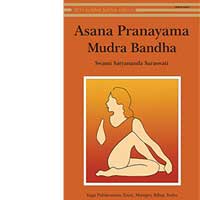 Author: Swami Satyananda Saraswati
Author: Swami Satyananda Saraswati
This book explains the Bihar School of Yoga’s approach to practice. This lineage was founded in 1964 by Sri Swami Satyananda Saraswati and was designed to blend ancient yoga teachings with modern health sciences. As the title suggests, this resource breaks down four main components of yoga: asana (physical postures), pranayama (breathing techniques), mudra (symbolic hand gestures), and bandha (ways to constrict pranic flow in the body). As with each section, the author provides detailed explanations of each technique. And he reveals a recommended regimen to increase your pranayama skill set.
The Breathing Book
New Zealand native, Donna Fahri, has been practicing yoga for 42 years, and teaching for the last 36. Her depth of knowledge and scope of practice has been translated into many books, including this fantastic workbook on breathing. I use the term “workbook” because Fahri translates the philosophy of pranayama into practical, easy-to-use techniques. And, she addresses how to use such tools if you have asthma, depression, and chronic pain (among a long list of other specific conditions).
Anatomy of Breathing
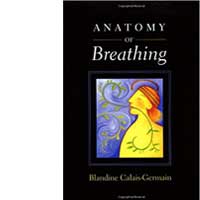 Author: Blandine Calais-Germain
Author: Blandine Calais-Germain
The quality of the breath changes from moment to moment, and this book is designed to help you select specific breathing practices to support you at those specific points in your journey. In addition to providing more detail about the science of respiration, practical tools are provided to help you increase your skills in pranayama. If you like getting to the point on any subject, this book is for you. The format is straightforward and applicable!
The Yoga of Breath: A Step-by-Step Guide to Pranayama
This book not only covers the history and philosophy of pranayama, but it expands on practical ways you can implement them into your existing physical yoga regimen. Rosen also goes to great lengths to explain the multi-layered benefits of a pranayama practice. Due to the depth of content, this resource might scare off those new to the breathing consciously. Yet, when used in conjunction with some of the other great beginner books listed here, you will undoubtedly grow in your knowledge of pranayama as part of a larger self-care routine.
Hatha Yoga Pradipika
This ancient text was written in fourteenth century and provides very specific guidance on various interrelated practices of yoga. Not only does this work contain the original explanation of such techniques in sanskrit, but it also contains an english explanation to bring these early ideas into modern-day context. Considering this is one of the first substantial writings on Hatha yoga, it’s worth the time and energy to understand your yogic roots.
Teaching Yoga
Yoga will change your life, and teaching it can do so in even more dramatic ways. Stephens breaks down the essential elements to teaching yoga in this detailed manual. One of his numerous strengths is his ability to blend the immense amount of yoga knowledge, history, and practical application into one user-friendly book. Well, actually, this is one of four fantastic resources he has on the market today for teachers and in-depth practitioners alike. Not only does he cover basics about many pranayama techniques, but he also shows you when and to whom these tools can be taught. If you’re looking for one great, broad-stroke guide-book , this could be your best bet!
Ageless Body, Timeless Mind
The breath, mind, and body are interconnected on deep levels. In this book, Chopra shares incredible ways to use all three to prevent deterioration that is often associated with aging. In order to sustain such a high quality of life, a new set of beliefs are set forth. When you embrace such perceptions and learn to master simple actions that support those ideas, you can enjoy each day with more abundant health and joy. An increased capacity to breathe through it all is part of this process.
PUTTING IT TOGETHER
Breathing is what keeps us alive in our human form, and there are ways in which we can use the breath to add nourishment and awakening into our experience. Pranayama, which refers to these conscious breathing techniques, go hand-in-hand with an active yoga practice and the pranayama resources recommended above are great guides for this part of your journey.
Stay tuned as next week I uncover my own home pranayama practice. I’ll also answer some common questions about timing so that you can increase efficiency in your yoga business.


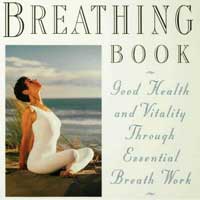
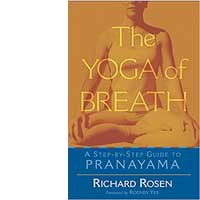
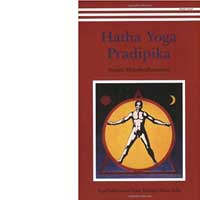
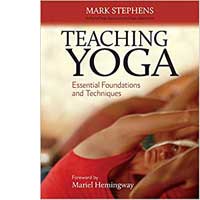
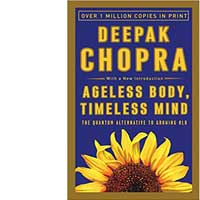
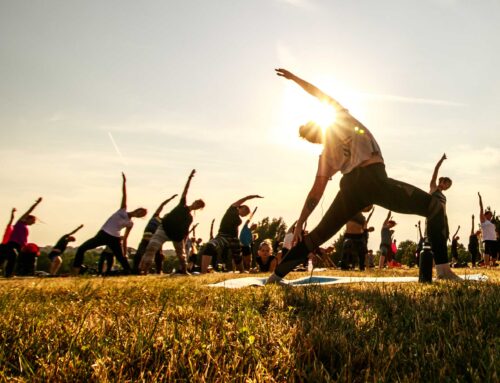
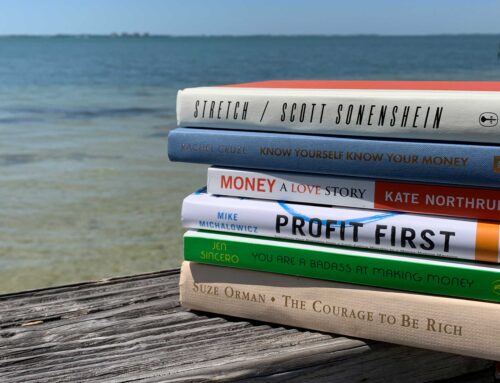
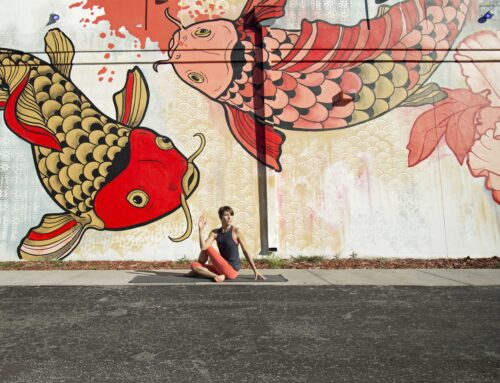
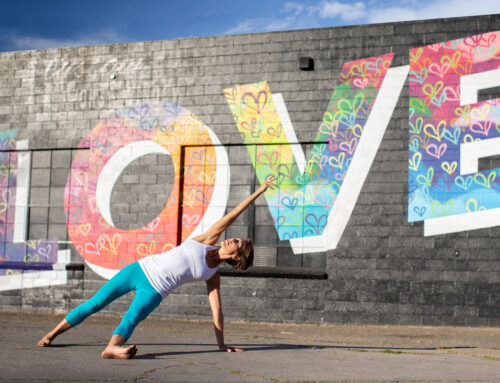
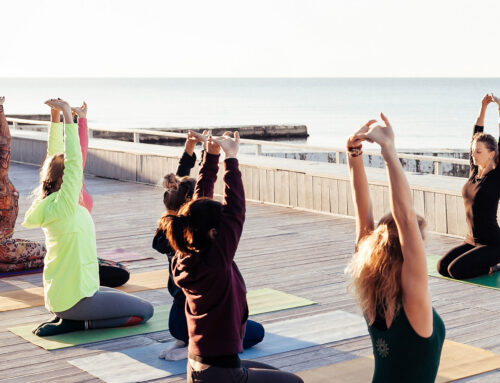
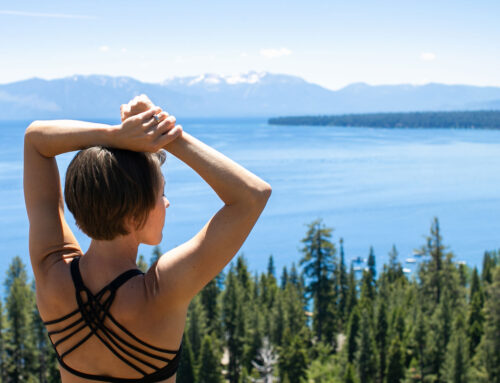
Hi! Thanks for this! I love what you’ve shared. Yoga is so much more than the asana and I truly appreciate this post 🙂 Another great book — Pranayama: A Path to Healing and Freedom, by Allison Gemmel Laframboise and Yoganand Michael Carroll. Yoganand was my teacher for my 200 hr and 300 hour module on pranayama and he’s truly a master. Anyway, thanks again! Have a great day!
Hi Lauren. Thanks for this new book recommendation. I’m going to order it this week and check it out! Hope you’re having a great day, too!
Hi and thank you. I am a new yoga teacher and this helped me a lot. Thank you again I appreciate your work
Hi Mona,
Congrats on receiving your teacher certification and starting down the teaching path! I’m happy you found this material helpful, and I’m open to more ways in which I can make your journey as a teacher easier/more effective/more joyfu/etc. Please let me know how I can best be of service. Thanks for being part of the Swagtail community!